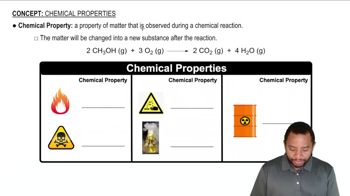An element X reacts with oxygen to form XO2 and with chlorine to form XCl4. XO2 is a white solid that melts at high temperatures (above 1000 °C). Under usual conditions, XCl4 is a colorless liquid with a boiling point of 58 °C. (a) XCl4 reacts with water to form XO2 and another product. What is the likely identity of the other product?
Write balanced equations for the following reactions: (a) boron trichloride with water (b) cobalt (II) oxide with nitric acid (d) carbon dioxide with aqueous barium hydroxide.
 Verified step by step guidance
Verified step by step guidance
Verified video answer for a similar problem:
Key Concepts
Chemical Reactions

Balancing Chemical Equations

Acid-Base Reactions

An element X reacts with oxygen to form XO2 and with chlorine to form XCl4. XO2 is a white solid that melts at high temperatures (above 1000 °C). Under usual conditions, XCl4 is a colorless liquid with a boiling point of 58 °C. (b) Do you think that element X is a metal, nonmetal, or metalloid?
An element X reacts with oxygen to form XO2 and with chlorine to form XCl4. XO2 is a white solid that melts at high temperatures (above 1000 °C). Under usual conditions, XCl4 is a colorless liquid with a boiling point of 58 °C. (c) By using a sourcebook such as the CRC Handbook of Chemistry and Physics, try to determine the identity of element X.
Write balanced equations for the following reactions: (a) sulfur dioxide with water (b) lithium oxide in water (c) zinc oxide with dilute hydrochloric acid (d) arsenic trioxide with aqueous potassium hydroxide.
